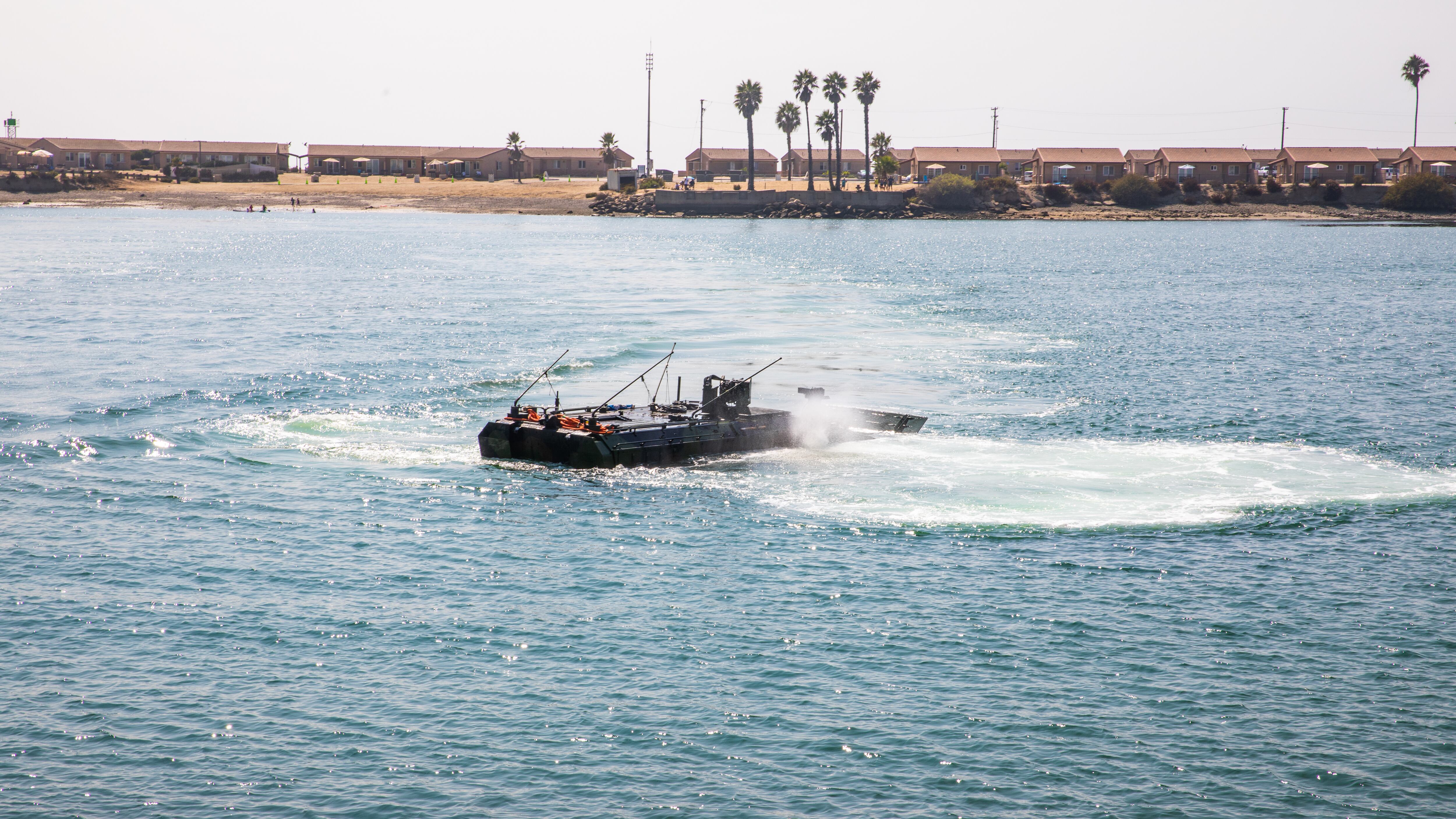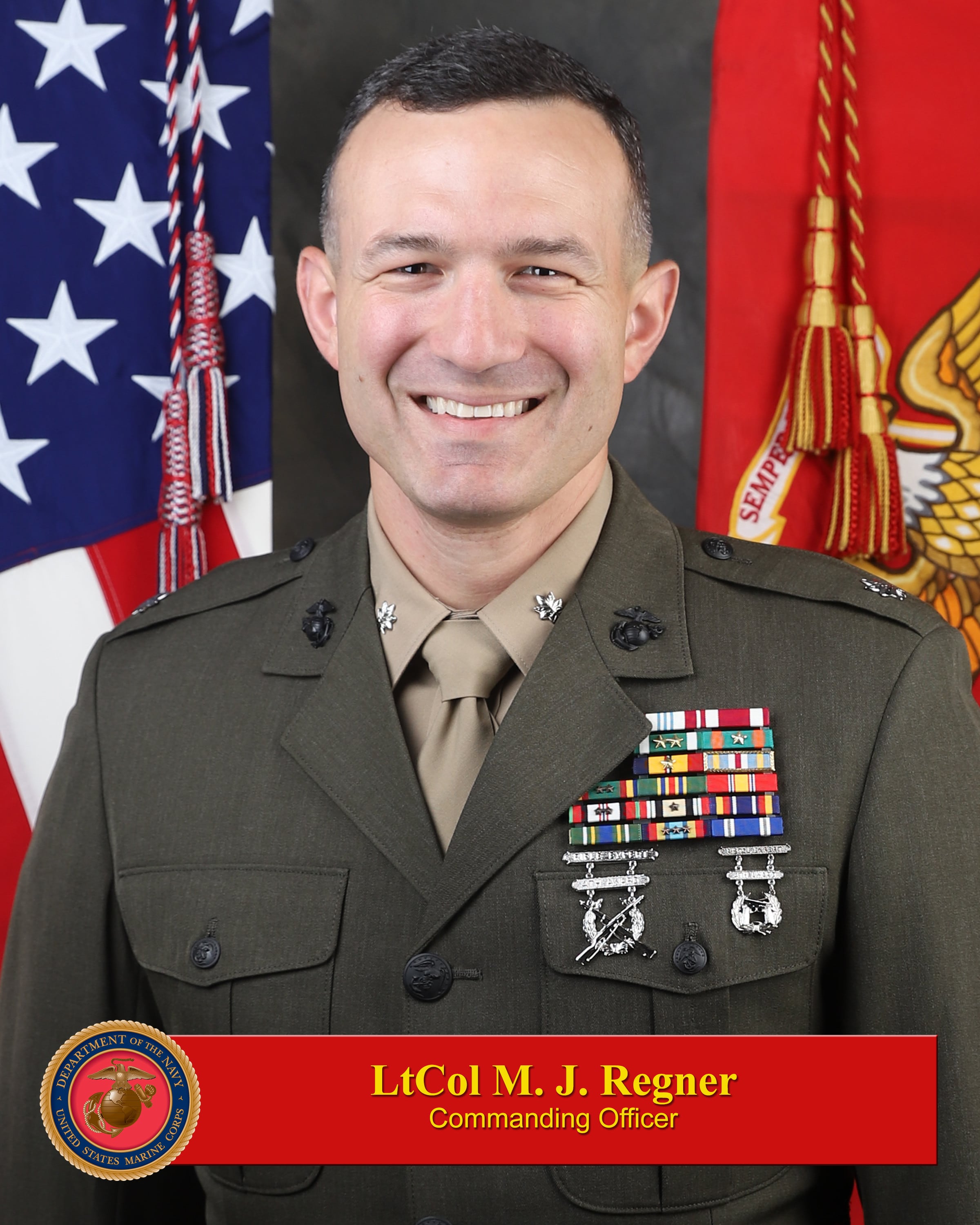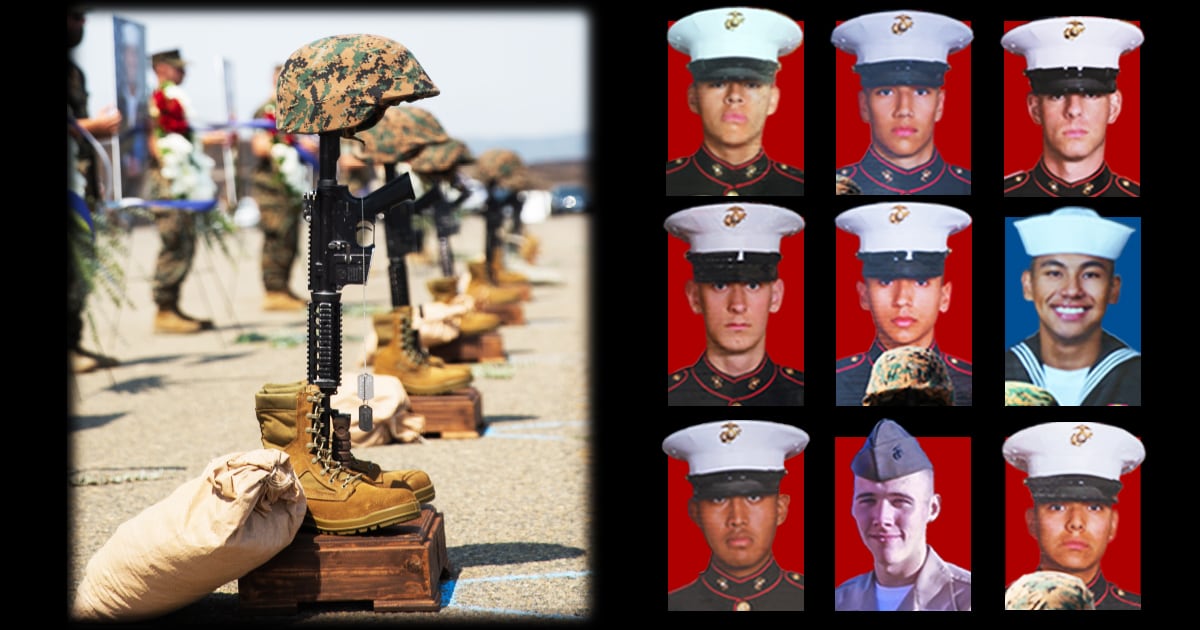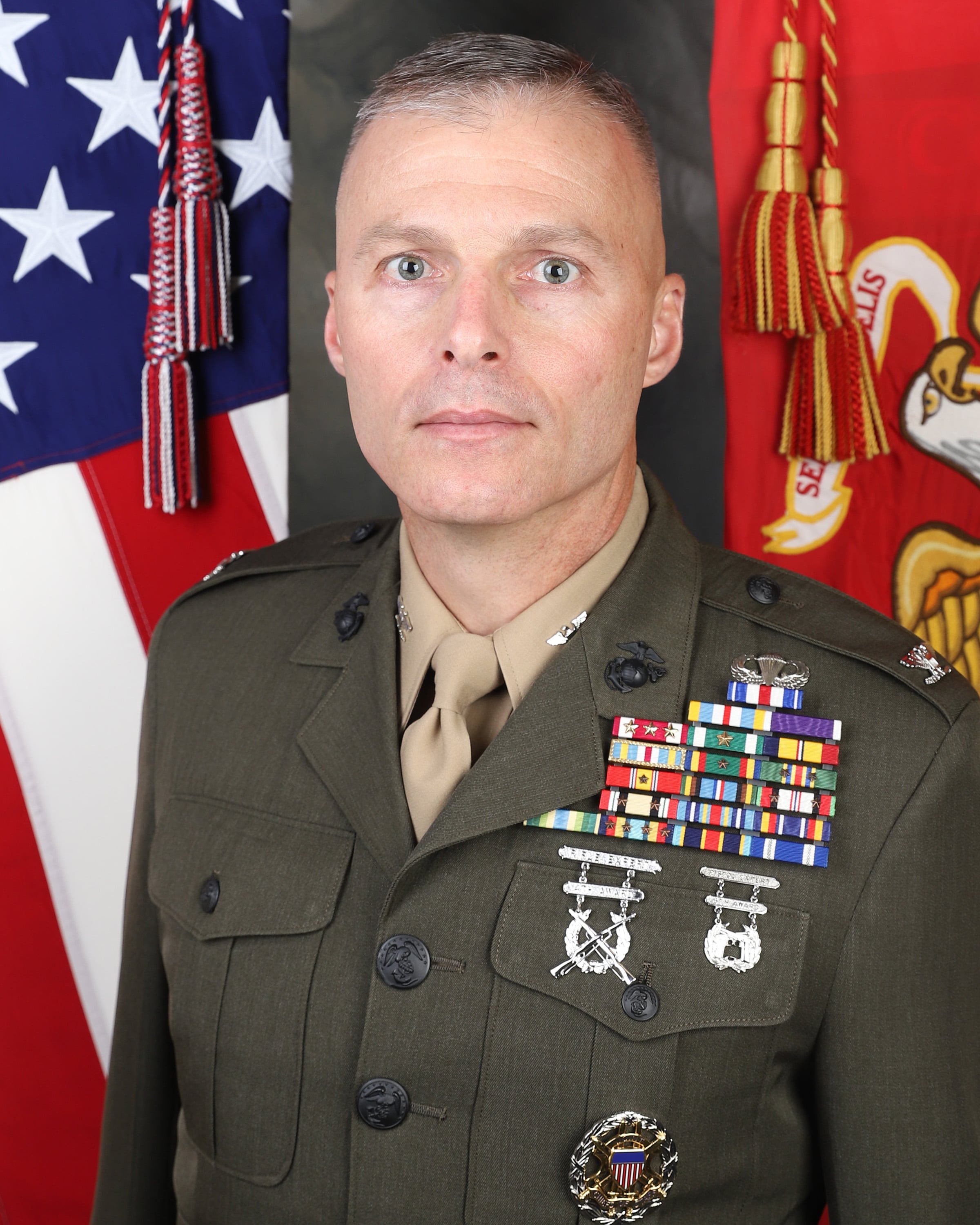The Marine Corps’ amphibious combat vehicle is “set to return” to unrestricted waterborne operations after the service developed a new way of using a tow rope for recovery operations, officials said.
The ACV will conduct the workups and deployment with the 13th Marine Expeditionary Unit beginning this spring. However, if a unit has met all the criteria to begin training with the ACV in unprotected waters, you could see training events sooner than this spring with the 13th Marine Expeditionary Unit, Marine Corps spokesman Maj. Jim Stenger told Marine Corps Times on Friday.
The Corps put a safety halt in early September 2021 on running the ACV — the decadeslong project to replace the aging amphibious assault vehicle, in unrestricted forms.
The Sept. 3, 2021, safety notice had identified a problem with the ACV’s towing mechanism. The service made the decision out of an “abundance of caution,” Marine spokesman Maj. Jim Stenger told Marine Corps Times in September 2021.
“The Marine Corps is working on identifying and fixing the root cause of the problem,” Stenger said. “Realistic training is a vital component of readiness, and the Marine Corps is committed to ensuring Marines train under the safest conditions possible; this includes ensuring the functionality of vehicles and equipment.”
Once the units are equipped with the new tow rope solution, they then will be authorized to use the ACV in unrestricted operations.
Before they get the new ropes, however, Marines operating ACVs are restricted to land mobility, gunnery operations and amphibious operations in protected waters, according to a Marine press release.

Stenger told Marine Corps Times on Friday that “unprotected waters” refer to shoreline ops or ship-to-shore operations.
Protected waters would be an area protected from the surf by a barrier or jetty and used for training, he said. An example includes the Del Mar Boat Basin aboard Camp Pendleton, California.
“Amphibious operations, including the use of amphibious ship-to-shore connectors, is a foundational aspect of Marine Corps operations and is critical to the future force and its ability to remain the nation’s premier expeditionary force in readiness,” said Lt. Gen. David Furness, deputy commandant for plans, policies and operations.
But the ACV halt, along with the tragic deaths of nine Marines trapped in a sinking AAV on July 30, 2020, has put both of the Corps’ ship-to-shore connectors under serious scrutiny.
This week a board of inquiry hearing is being held at Camp Pendleton, California for Lt. Col. Michael J. Regner, who commanded the AAV unit that saw a vehicle sink in July 2020. Gunnery Sgt. Johan Lacea, former platoon sergeant of the AAV platoon, will face an administrative separation board for his actions connected to the sinking.

As the vehicle sunk quickly in water 385-feet deep, only eight of the 16 onboard were rescued. Eight Marines and one sailor died in the incident. They are:
- Pfc. Bryan J. Baltierra, 19, of Corona, California.
- Lance Cpl. Marco A. Barranco, 21, of Montebello, California.
- Pfc. Evan A. Bath, 19, of Oak Creek, Wisconsin.
- Navy Hospitalman Christopher Gnem, 22, of Stockton, California.
- Pfc. Jack Ryan Ostrovsky, 21, of Bend, Oregon.
- Lance Cpl. Guillermo S. Perez, 20, of New Braunfels, Texas.
- Cpl. Wesley A. Rodd, 23, of Harris, Texas.
- Lance Cpl. Chase D. Sweetwood, 19, of Portland, Oregon.
- Cpl. Cesar A. Villanueva, 21, of Riverside, California.

Regner was relieved of command of the Battalion Landing Team of 1st Battalion, 4th Marine Regiment, 15th Marine Expeditionary Unit following the incident. Col. Christopher J. Bronzi, Regner’s immediate supervisor, was relieved of command of the 15th MEU in 2021.
Military officials have pointed to Regner’s “substandard performance” as commander to setting conditions that led to the sinking.
A Corps investigation found inadequate training of platoon members and AAVs that had not been used in more than a year and were in “poor condition.”
Rushed repairs to meet training deadlines may also have contributed to the sinking.

In December 2021, the Corps announced it was pulling all AAVs from future deployments and halted all waterborne training with the aged platform.
Marine officials specifically referenced the 2020 “AAV tragedy” in the update to ACV operations, noting that all ACV crews will be required to conduct standard new equipment and training requirements as well as 18 tasks for completion, validation and certification before they may return to waterborne operations.
Stenger laid out, in detail for Marine Corps Times on Friday, what that includes:
1) All ACV crew members and embarked personnel conducting waterborne operations must possess current Marine Corps water survival qualifications.
2) All ACV crew members and embarked personnel must qualify in the submerged vehicle egress trainer with the waterborne egress capability. No waivers to qualification. O-6 commanders may authorize temporary waivers to unique travelers (recon, trap recovery, etc.) Provided they are submerged vehicle egress trainer or modular amphibious egress trainer and water survival qualification complete.
3) Ensure ACV crews meet training and readiness standards by billet to train with embarked personnel in waterborne operations.
4) All ACV crew members and embarked personnel must complete integrated training which includes at a minimum interoperability and safety training between AAV/ACV crews and embarking personnel. O-6 commanders may authorize temporary waivers to unique travelers (recon, trap recovery, etc.) Provided they are submerged vehicle egress trainer or modular amphibious egress trainer and water survival qualification complete.
5) All ACV crew members and embarked personnel must complete evacuation procedures and emergency egress procedures drills on both land and water.
6) All ACV crew members must pass a common knowledge examination developed by the Assault Amphibian School prior to resuming/conducting water operations.
7) All ACV personnel returning to the AA community from b-billets or other assignments must be tested and certified on their knowledge of operational and safety procedures in accordance with the respective training and readiness standards.
8) Ensure completion of risk management records prior to all operations.
9) In coordination with Marine Corps Safety Division, develop and implement a “mishap lessons learned program,” through the unit safety officer.
10) Ensure all ACVs are compliant with applicable criteria. ACVs that exceed the mandated thresholds will not resume water operations until they are corrected, re-inspected, and meet those thresholds.
11) Waterborne operations safety architecture requirements:
a. Employ safety boats at all times for waterborne operations.
b. Unloaded ACVs are no longer authorized to act as a safety boat.
c. One safety boat for five or fewer ACVs and two safety boats for six or more ACVs.
d. At a minimum, one unloaded ACV must be provided to each wave as a bump/recovery vehicle to receive personnel in the event of an emergency.
e. Positive communications established between safety boats, AA unit and ship.
12) All ACV crew members and embarked personnel will be equipped with and trained in the use of an ACV waterborne egress capability that includes a supplemental emergency breathing device.
13) Confirm the communication procedures used during emergencies prior to conducting waterborne operations with all participating units.
14) Conduct sea state assessment when operating without U.S. Navy amphibious shipping.
15) Ensure all operations with U.S. Navy amphibious shipping are conducted in accordance with appropriate directives. (Only applies to ship-to-shore and shore-to-ship movements.)
16) Assess water integrity prior to operations via splash team checklist.
17) Provide a waterproof copy of AA common standard operating procedure provided to every ACV.
18) Provide a waterproof copy of embarked troop brief provided to every ACV.
Editor’s note: This article has been updated to include additional information regarding ACV unprotected water operations in the near term.
Todd South has written about crime, courts, government and the military for multiple publications since 2004 and was named a 2014 Pulitzer finalist for a co-written project on witness intimidation. Todd is a Marine veteran of the Iraq War.









